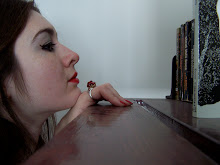There’s good and bad news about She Wants Revenge’s sophomore release, This Is Forever. The bad news: it sounds exactly the same as their first album. The good news: it sounds exactly the same as their first album.
That’s always been the central conundrum of She Wants Revenge. Originality is not their strong point, but they never meant for it to be. The music, even sometimes the song titles, are a precisely calculated homage to post-punk and Depeche Mode style New Wave. Of course, you can’t go wrong with that, and there’s no denying that the songs are good. There’s a kind of genius in their achievement, an admirable exercise in excellent style over substance. What keeps the whole thing from slipping into tired parody is that She Wants Revenge is doing it with tongue firmly in cheek.
Like their first album, the new one This Is Forever, starts off with a moody electro instrumental piece, First Love. The rest of the album essentially follows suit with varying degrees of success. Written In Blood is the weakest song. It comes off as less knowing homage and more like a formulaic pastiche. The fun wears a bit thin on She Will Always Be a Broken Girl and Replacement. One song starts to blend into the next.
There are some genuinely good moments. All Those Moments is a gentler counterpoint to First Love, and is a welcome change of pace. Checking Out’s Sisters of Mercy style guitar and bass play to the duo’s strengths. Closer Rachael is the most successful song; it’s moody and coolly detached, and the brazen influences come off as cheeky rather than tired.
There’s not much new in This Is Forever. There doesn’t have to be. It’s all in good fun, and even though the party is winding down it isn’t quite over yet.
